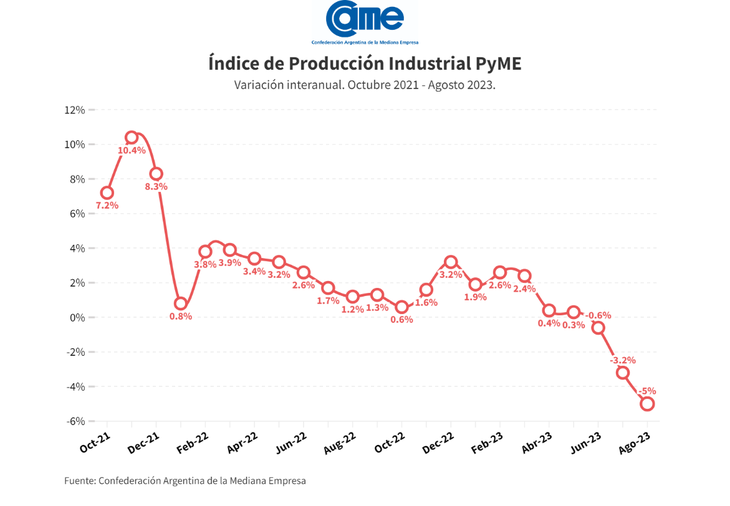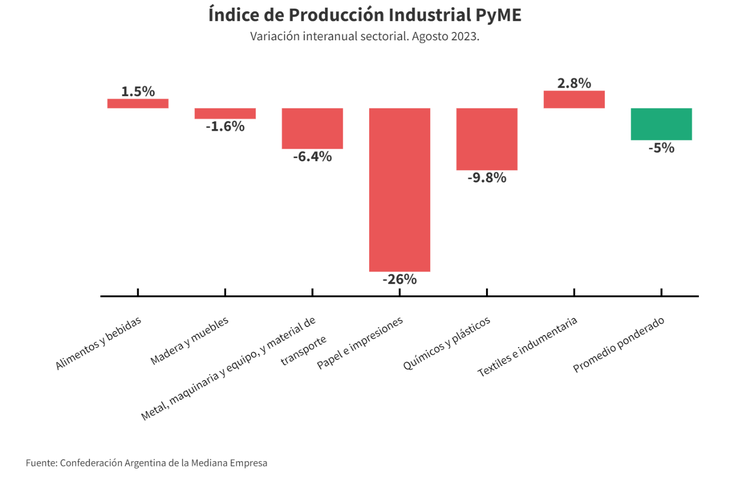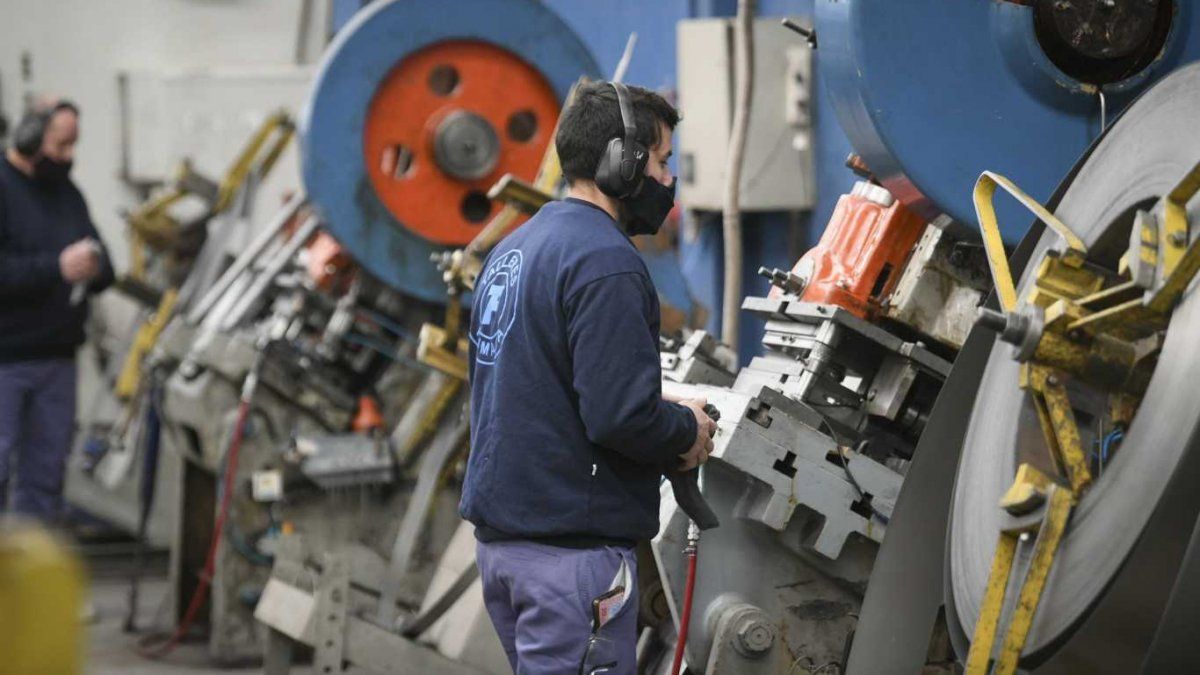Industrialists expressed concern about the shortage of merchandise, increases in inputs and difficulties in making payments abroad.
The SME manufacturing industry suffered its third consecutive month of contraction in August, experiencing a 5% decline compared to the same period a year earlier. If the accumulated period from January to August 2023, an annual drop of 0.1% is evident. Furthermore, with regard to the monthly comparisonalso declined -0.9%.
The content you want to access is exclusive to subscribers.
During this month, companies operated, on average, at 73.1% of their installed capacity, and 54.6% of them reported difficulties in replenishing their inventories. This period was strongly influenced by the economic events linked to the STEP elections, how to be the devaluation and the increases in prices, that significantly impacted productive activity.


It is observed that companies that have a financial margin chose to accumulate inventories of inputs, as a measure to guarantee the continuity of production in the coming months. In turn, the industrial consulted expressed their main concerns, which include the shortage of goodsdisproportionate increases in input prices and difficulties in carrying out payments abroad.
unnamed.png

SME industry: sector-by-sector analysis
The best performance in August he was in “Food and drinks”, with an annual growth of 1.5% in its production, at constant prices and Textiles and Clothing (+2.8% annually). The worst happened in “Paper and Prints”, with a drop of 26% year-on-year. This same sectoral performance is observed in the accumulated behavior of the year with increases of 4.8% in “Food and Beverages” and 1.5% in “Textiles and clothing” and with a collapse in “Paper and Printing” of 16.2% .
During the month of August, production experienced an annual increase of 1.5% at constant prices, adding an increase of 4.8% in the first eight months of the year compared to the same period in 2022. However, in monthly terms, a retraction of 2.8% was recorded. During this period, the industries They operated at a level of 71.6% of its installed capacity, which represents a decrease compared to the 74.3% registered in July.
unnamed (1).png

SME industry: the biggest difficulties
With regards to the supply chain, suppliers reduced payment terms, which generated concern in the sector. Furthermore, it was reported notable shortage of products in high demand, such as sugar from recognized brands, flour, tin containers and wooden boxes. The challenges of importing and acquiring spare parts for machinery continue to be a persistent problem in the industry.
Source: Ambito




